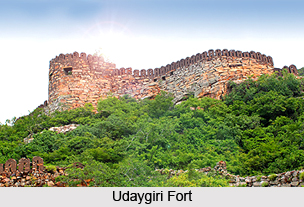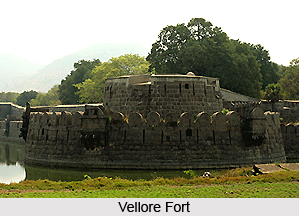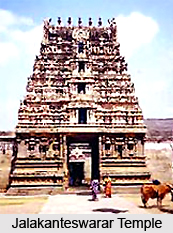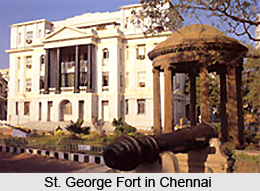 1. Udaygiri Fort
1. Udaygiri Fort
Though the 400-year-old Udayagiri Fort in Kanyakumari District is of historic significance, tourists because of its proximity to the more famous Padmanabhapuram Palace do not visit it, which is barely two km away. It is a 970-acre plot. This fort was originally constructed in 1600 A.D. and destroyed by Raja Raja Chola. Later, it was reconstructed and renovated twice by King Marthanda Varma with granite blocks, between 1729 and 1758. This is the place with its 290-ft tall walls, which served as a vital military station of the Travancore rulers when Padmanabhapuram was the capital of Travancore. One of the oldest monuments in the State, a foundry was established here for casting and storing guns, mortars, cannon balls and other military equipment and ammunition. The East India Company`s troops were stationed here till the mid-19th Century. Tipu Sultan`s forces were also stationed here for a short while in the 18th Century.
With every step and stone steeped in history, the Udayagiri Fort makes for a perfect educational pleasure trip. With all the changes going on now, it also makes for an ideal picnic spot. An underground hidden passage was recently discovered here. There is a tomb of Dutch Admiral Eustachius De Lannoy, who was one of the 24 European prisoners taken by King Marthanda Varma when he defeated the invading Dutch Army at Colachel. History records that when the young Flemish Captain made his journey to Travancore through the small, but important port town of Colachel, King Marthanda Varma`s army destroyed his forces. Later as Flemish was captured he remained loyal to the Maharaja for 37 years and trained his army in modern warfare, the present 9th Battalion of Madras Regiment. It is because of this incident that the Udayagiri Fort was called the `Dillannai Kottai,` where the De Lannoy stayed with his family till his death. Lannoy`s body and that of his wife and son are buried within the fort and a chapel has been built around it. A stone cross stands on the top with inscriptions in Tamil and Latin.
2. The Fort Museum
The Fort Museum formally opened in 1948 houses the fine collections of original writings of the various personalities who made Madras history for about a century. Portraits of past governors, painting of the storming of Srirangapatna and scenes of earlier Chennai are showcased on the walls of this museum. Medieval weapons, collection of coins, silver wares, porcelain, manuscripts, engravings etc is on display. A spectacular history of the past comes in our minds. The marble statue of Cornwallis and Tipu Sultan handing over his children depicted here brings before our eyes the Carnatic wars.
 3. Vellore Fort
3. Vellore Fort
Vellore Fort is a large historic 16th Century fort situated in Vellore town near Chennai in Tamil Nadu. It was built by Nayakar leader of the Vijayanagara Empire. It is constructed of large granite blocks, known for grand ramparts, wide moat and robust masonry. It passed from the Nayaks to Bijapur Sultans, then Marathas and to Carnatic Nawabs and finally to British till Independence. During the British rule the fort had Imprisoned Tipu Sultans family and the last Nayak king of Kandy (Sri Lanka). The Fort also houses a Hindu temple, Christian church and Muslim mosque. The first revolt against British rule had started at this fort in 1806. The Fort is considered to be one the best specimen of a ground fort in India and the Temple within the Fort is famous for the magnificent carvings.
History
The Fort was built in the third quarter of 16th century (around 1566) by Chinna Bommi Nayak and Thimma Reddy Nayak, subordinate leaders under Sadasiva Raya of Vijayanagara Empire. The Vijayanagara kings called it "Raya Vellore" to differentiate it from Uppu Vellore in the Godavari region and the name Vellore is also spelt "Belur". The present day Chennai region and Tirupathi were under the domains of this Fort.
Spiritual complex
The fort is an interesting complex compromising a temple, a mosque, a church and a series of British military buildings. Among the various protected historical monument inside the fort, the most magnificent is the Sri Jalakanteswarar temple devoted to Lord Siva.
 Jalakanteswarar Temple
Jalakanteswarar Temple
The large impressive Siva temple was built about the same time as the fort in Vijayanagara architecture style and is located on the Northern wall within the fort. The lingam of Lord Shiva gets its name from the natural underground spring upon which it resides, on of the reasons why the moat has never dried, no matter how severe a drought. Named after Jalakanteswara, or "Lord Siva residing in the water", the temple has a Nataraja Siva deity on the northern altar and Siva-lingam on the western altar. The 30m (100ft) high, seven-storey Gopuram is made of blue granite, flanked by two carved dwarpalas (door guards). The temple is renowned for the magnificent carvings on the pillars of the kalyana mandapam (Marriage Hall) which are fashioned as rearing lions, horses with riders, yalis and other mythical beasts and considered to be one of the most impressive temples in India.Though worship ceased during the battles with the Adil Shahis of Bijapur, the legend states the fact that, fearing the Muslim invasion, the ruler hid the deity to prevent Destruction of the statue . But the lingam was protected so well that it was never found and the Temple remained for centuries. Eventually, post-independence in 1981, the local people constructed the statues again and rituals started after a kumbhabishekam. The temple is now taken care by a trust and re-established as a place of worship.
 4. Fort St. George
4. Fort St. George
Fort St. George is related to the development of the city of madras, which is at present the famous metropolitan city of India, and popularly known as Chennai. The fort St. George was built by the east India Company in 1639-40. It was one of the first English establishments in India. The Raja of Chandragiri who is the last representative of the Vijayanagar rulers of Hampi gave this small piece of land. In this piece of land a fort along with a town was built which was later famous as George Town. It was given recognition of the first municipal charter in 1688 by James-II and so it is the oldest municipal corporation and the ruling community. Even today all the administrative functions of this Chennai are performed from this building. This monumental heritage building is the State Legislative Assembly of the metropolitan city of Madras. It is also the Secretarial office of the Tamil Nadu government.
Within the arena of fort St. George there is St. Mary`s church, which is the oldest Anglican Church in India. It was built in 1680 and this ancient fort witnessed the marriages of Rover Clive and Governor Elinu Yale who later became the founder of the University of Yales. The museum in the fort is a rare display of weapons, uniforms, coins, costumes, medals and many other classic items, which reminds us of the ancient India. The exterior of the museum shows an array of massive cannons used by Tipu Sultan. Also the flagstaff in fort St. George is the tallest one in India.



















